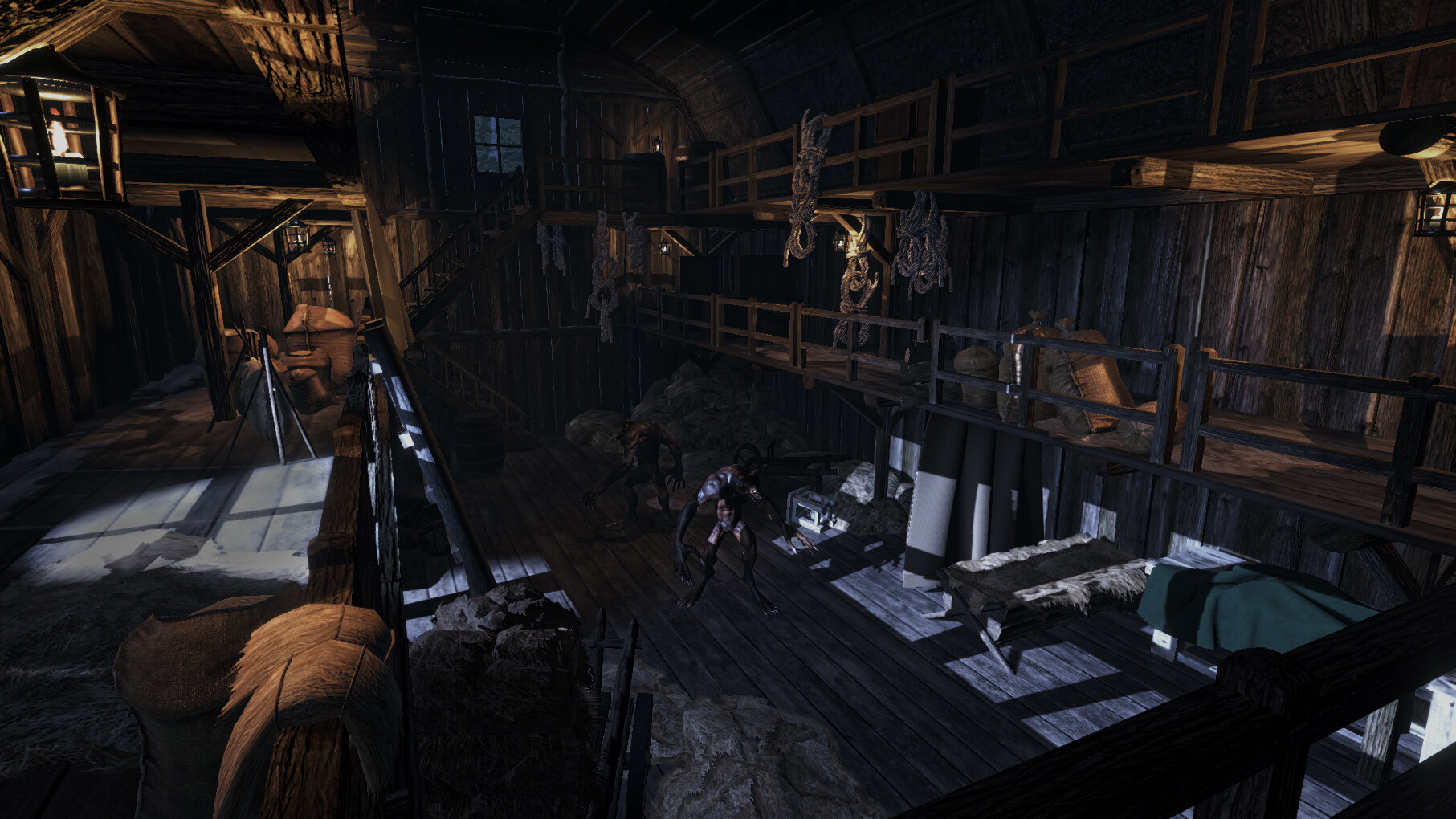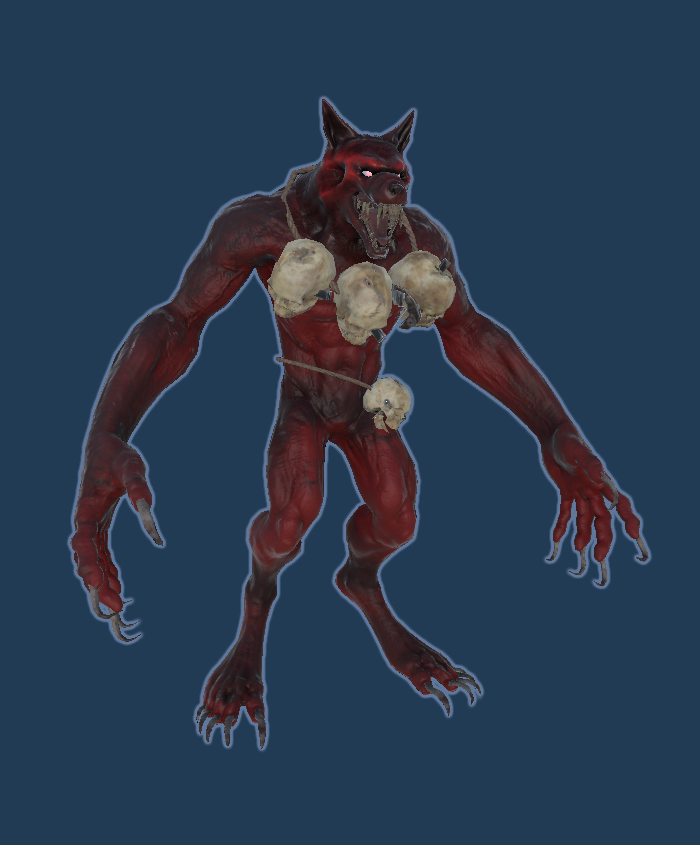
A lone warrior. A secretive order of knights. A town in disarray. Knight of the Silver Eye is a 3rd-person Action-Adventure following the lonesome journey of a beast-slaying protagonist.

What is Knight of the Silver Eye?
Knight of the Silver Eye is a 3rd-Person Action-Horror Adventure inspired by the frightful atmosphere of a 80/90’s horror film, combined with a focus on tight, frantic, and challenging combat.
This game was created in Unity Game Engine as a Capstone Project for completion of DePaul University’s Game Design Program. I, alongside six other talent students/Alumni from DePaul set out to create our most ambitious project yet. I helmed the project as the Lead Game Designer.
My Role as Lead Game Designer
As Lead Game Designer, I designed the inner gears of our game’s mechanics. We often would begin by discussing the mechanics at a surface level as a group. After deciding on the direction/concept for a mechanic, I would begin detailed documentation of said mechanic, including images or in-depth suggestions of how to achieve the intended results in-engine. I attempted to be as explicit as possible so that our two programmers would know exactly which aspects of the character/enemies I would need easy access to for efficient development. For Example: Arrow Speed or Player Rotation speed were made accessible in the Unity Inspector for easy modification, per my request.
I often had final say on the purpose/role of game mechanics. This was a lot of pressure, as I was not initially “voted” Lead Game Designer. The role manifested as I began to suggest more concrete plans during an early period of directionless we were experiencing.

Character Art
I designed and modeled our protagonist. I gathered a variety of references themed on the steampunk ascetic and the victorian era. I also drew some concept art before starting the modeling.
The “Knight of the Silver Eye” was created using Autodesk Maya, Substance Designer, and Substance Painter.
Ideation and Early Development
Our first big challenge was establishing a tense yet exhilarating atmosphere. We looked to movies like Van Helsing for inspiration on what a 1700’s themed monster hunter might look and act like.
The prospect of a diverse set of gear used to strategize around small number of powerful boss-like creatures was exhilarating. This had its pitfalls. Our first draft of the game’s mechanics layed out a plan for 10+ weapons. This would be amazing if we didn’t only have seven months to complete this project. After some much needed discussion and feedback from peers outside our team, we focused our gameplay goals into two weapons: The Sword, and The Bow.
Most weapon concepts could be melted down to one of two categories: ranged or close-quarters. As such, we could assimilate our many concepts into our two chosen weapons. Ranged based ideas such as throwing knives or a revolver could be streamlined into easier to develop arrow types instead. For example: A fast, light arrow as a stand in for throwing knives, and a Heavy slow arrow in place of a revolver. This would reduce development time significantly, as arrow types would require fewer models, fewer animations, and much less programming compared to entirely new weapons.

Core Mechanics
We looked to the ever-influential Dark Souls for inspiration on the mechanics foundation of our combat. Souls combat is tense and challenging, a perfect fit for a game looking to make players panic. It made for a good pair with the pressing atmosphere we were looking to create.
We began with the basics of the genre. A light attack, heavy attack, and a dodge. The light-heavy attack pairing applied to both the sword and bow, offering ways to increase damage or range in exchange for a slower animation that requires more timing.
The dynamic between the bow and sword is as such: The Bow offers players range and an element of surprise against close-quarter foes. You cannot walk/run while using it, leaving you to rely on the sword when enemies close the gap after taking a couple arrows.
Enemies
Considering the ambitious scope of our game, we landed on the idea of having two enemies. Both werewolves, both vicious. One, a ranged blood-spitting “Blood-Wolf”. The other, a ferocious “Stalker-Wolf” specializing in close-quarters combat. Each challenges the player in a unique way, encouraging you to switch between weapons.
The Dynamic between player and enemy was set up as a sort of Rock-Paper-Scissors. The Stalker is a formidable foe up close, but can be weakened before a fight using the bow. The Bloodwolf consistently pelts the player with projectiles, which makes it difficult to use the bow against them, as you cannot walk/run with the bow out. Your best option is to run right up to them. They crumble easily under the swing of your sword.
Stalker-Wolf -> Sword -> Blood-Wolf -> Bow -> Stalker-Wolf

Reception & Post-Mortem
We hit a few additional road bumps throughout development. As previously stated, the project was ambitious. Certain Player Mechanics proved more difficult to materialize than originally anticipated. Combine that with more and more time being allotted to bug fixes and responding to playtest feedback, and something had to give. In this case, the Bow Heavy-Attack, and Arrow Types altogether didn’t make the cut. Those decisions weren’t easy, but were chosen due to the foundation of the game not being disrupted by their absence. the downfall of this decision was that the Dynamic of the arrow types, as well as the heavy attack, provided more diversity to the gameplay. We were able to reach completion much easier with fewer mechanics, but lost some of what was intended to make the game fun and unique among others of its genre.
Generally, those who played the game responded positively, noting the impressive scale and immersive atmosphere. I even sat in on sessions with playtesters who almost forgot it was a student project! All very flattering.
Those with more years of gaming experience (“Hardcore” gamers) and other Game Designers who played all agreed it was an impressive, fun, and a competent example of an Action-Horror game. However, this demographic also agreed that the game was missing something. The foundation was solid, but lacked something extra to make it stand out among similar games.
In hindsight, we should have further streamlined the mechanics more than we did. Unnecessary but impressive mechanics such as a save-quit-continue system made it in, despite it likely not being used often for such a short game. Additionally, I could have opted into a host of available tools to accelerate character creation, or even purchasing a Unity Package that would fit our need. The time saved from having to create an original character could have been spent in-engine. Live and Learn. Despite all of that, I am extremely proud of what my team created given such a short development cycle, and fully endorse my peers work on this project.


















